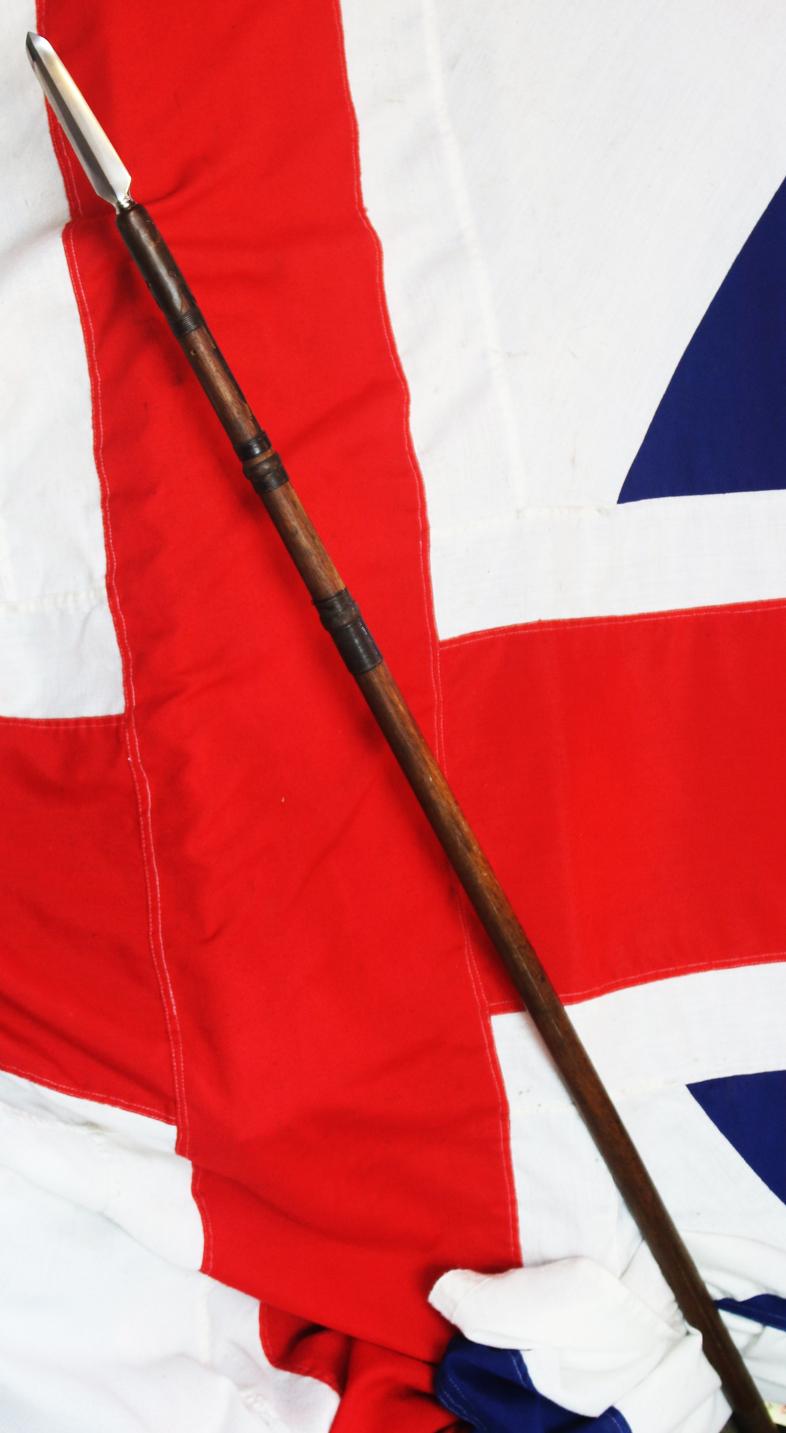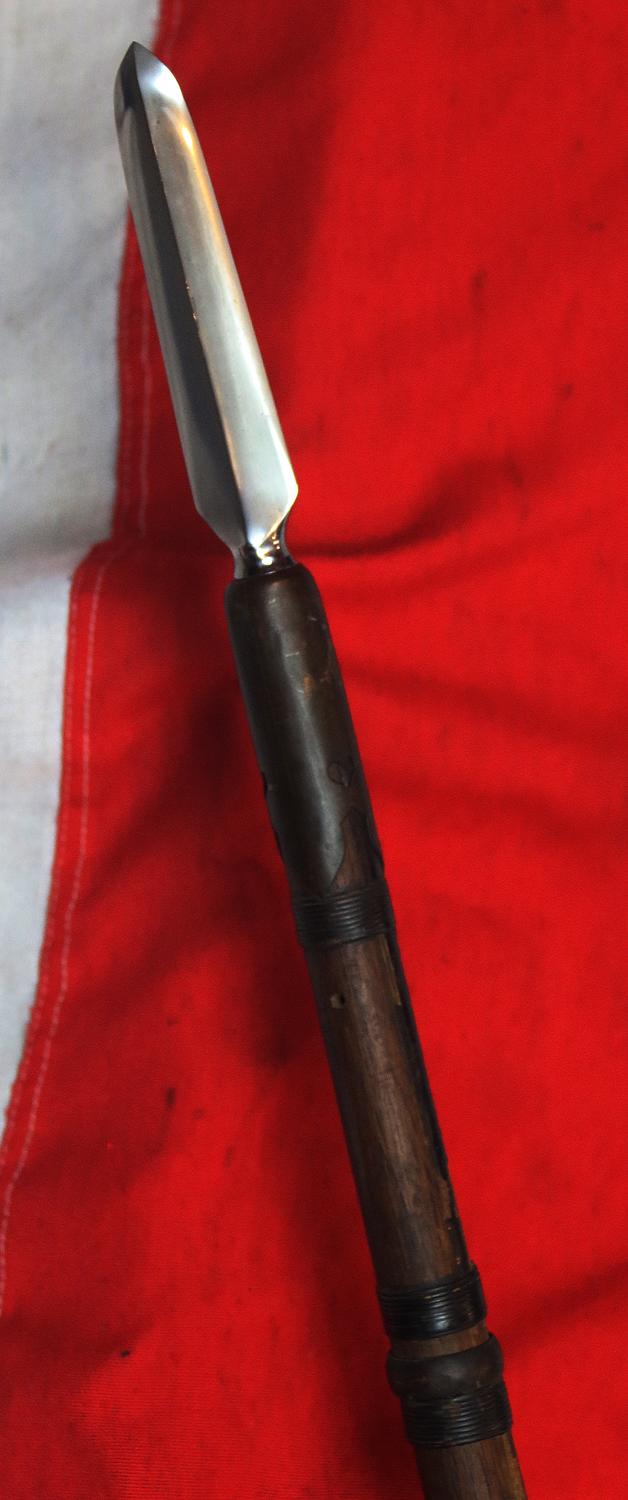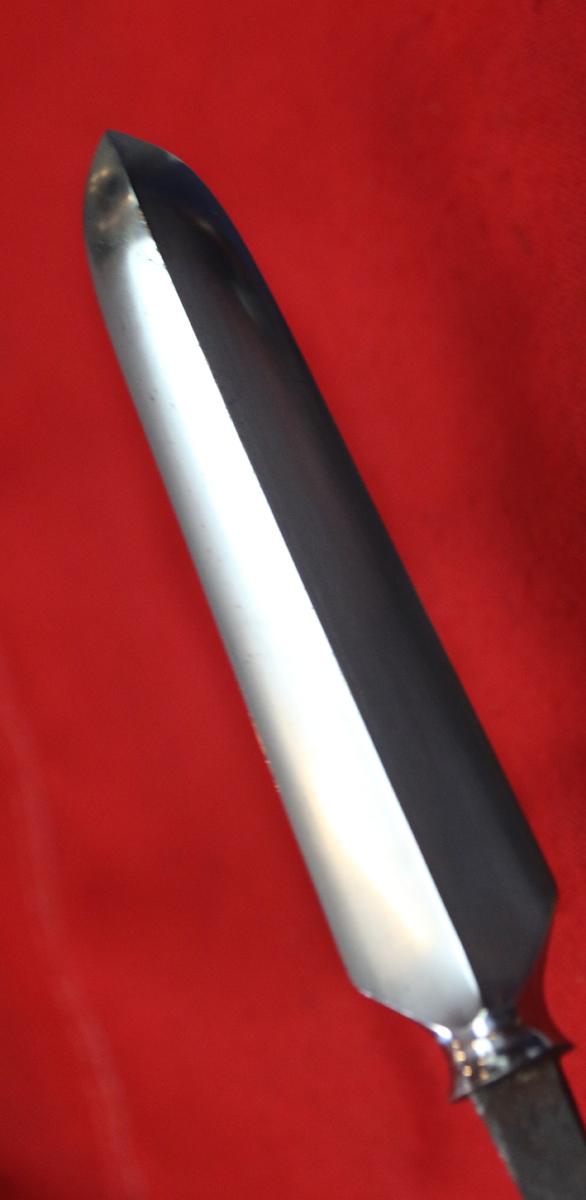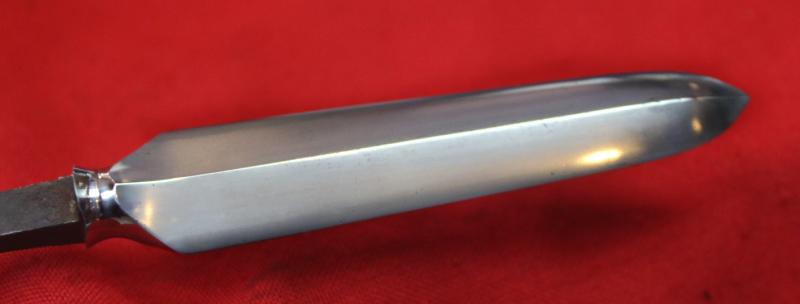A Shinto Samurai Yari Pole Arm Signed Yamashiro Kami Fujiwara Norishige, Probably Yamashiro-no-Kami Fujiwara Kunishige, Early Edo Period
A beautiful Edo Period Samurai Horseman Ryo-Shinogi Yari Polearm on original haft, signed.
With original pole and iron foot mount ishizuki. Four sided double edged head. The mochi-yari, or "held spear", is a rather generic term for the shorter Japanese spear. It was especially useful to mounted Samurai. In mounted use, the spear was generally held with the right hand and the spear was pointed across the saddle to the soldiers left front corner. The warrior's saddle was often specially designed with a hinged spear rest (yari-hasami) to help steady and control the spear's motion. The mochi-yari could also easily be used on foot and is known to have been used in castle defense. The martial art of wielding the yari is called sojutsu. A yari on it's pole can range in length from one metre to upwards of six metres (3.3 to 20 feet).
The longer hafted versions were called omi no yari while shorter ones were known as mochi yari or tae yari. The longest hafted versions were carried by foot troops (ashigaru), while samurai usually carried a shorter hafted yari. Yari are believed to have been derived from Chinese spears, and while they were present in early Japan's history they did not become popular until the thirteenth century.
The original warfare of the bushi was not a thing for "commoners"; it was a ritualized combat usually between two warriors who may challenge each other via horseback archery and sword duels. However, the attempted Mongol invasions of Japan in 1274 and 1281 changed Japanese weaponry and warfare. The Mongol-employed Chinese and Korean footmen wielded long pikes, fought in tight formation, and moved in large units to stave off cavalry. Polearms (including naginata and yari) were of much greater military use than swords, due to their much greater range, their lesser weight per unit length (though overall a polearm would be fairly hefty), and their great piercing ability. Swords in a full battle situation were therefore relegated to emergency sidearm status from the Heian through the Muromachi periods.
Code: 25187
1490.00 GBP







